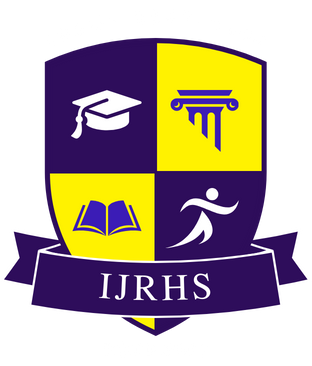![]()
Certificate: View Certificate
Published Paper PDF: Download PDF
DOI: https://doi.org/10.63345/ijrhs.net.v13.i9.4
Dr Amit Kumar Jain
DCSE, Roorkee Institute of Technology
Roorkee, Uttarakhand, India
amitkumarjain.cse@ritrroorkee.com
Abstract
Gesture-based communication constitutes a vital nonverbal channel that supplements and, at times, substitutes spoken language in classroom settings characterized by linguistic diversity. In multilingual Indian classrooms—where students and teachers navigate among regional tongues, Hindi, and English—silent gestures facilitate comprehension, foster engagement, and nurture social cohesion. This study probes the multifaceted roles of gestures by surveying 200 participants (80 teachers, 120 students) across five demographically and linguistically varied schools in urban and rural India. We catalogued the types and frequencies of gestures—iconic, deictic, and metaphoric—employed during instruction and peer interactions, and evaluated their perceived effectiveness via quantitative and qualitative measures. Iconic gestures, which visually represent objects or actions, emerged as the most prevalent, particularly in subjects demanding spatial reasoning such as mathematics and science. Deictic gestures, including pointing and demonstrating textbook references, played a critical role in guiding attention and structuring discourse. Metaphoric gestures, though less frequent, provided abstract conceptual scaffolding when carefully executed. Participants rated gestures highly for enhancing vocabulary acquisition (mean = 4.3/5), clarifying complex instructions (4.1/5), and sustaining learner attention (3.9/5). Qualitative feedback highlighted the democratizing potential of peer-to-peer gesturing, allowing students with varying language proficiencies to collaborate effectively. However, ambiguous or culture-specific gestures occasionally led to misinterpretation, underscoring the need for shared conventions and gesture-awareness training. Based on these findings, we propose integrating structured gesture modules into teacher education, developing curriculum materials that explicitly incorporate gestures, and encouraging reflective practices among educators and students. Such measures can strengthen multimodal pedagogies, mitigate language barriers, and promote inclusive learning environments in India’s multilingual classrooms.
Keywords
Gesture-Based Communication, Multilingual Classrooms, Nonverbal Interaction, Indian Education, Student Engagement
References
- García, O., & Wei, L. (2014). Translanguaging: Language, bilingualism and education. Palgrave Macmillan.
- Goldin-Meadow, S. (2003). Hearing gesture: How our hands help us think. Harvard University Press.
- Government of India. (1950). The Constitution of India. Government of India Press.
- Hostetter, A. B., & Alibali, M. W. (2007). Visible embodiment: Gestures as simulated action. Psychonomic Bulletin & Review, 14(3), 495–514.
- Kendon, A. (2004). Gesture: Visible action as utterance. Cambridge University Press.
- Kumaravadivelu, B. (2008). Transnational learning and pedagogy: A global perspective. TESOL Quarterly, 42(1), 113–149.
- Ladon, M. (2015). Gestures and second-language learning: A classroom perspective. Language Teaching Research, 19(2), 165–182.
- McNeill, D. (1992). Hand and mind: What gestures reveal about thought. University of Chicago Press.
- Msimang, S. (2016). Nonverbal cues in multilingual South African classrooms. Journal of Multilingual and Multicultural Development, 37(4), 321–335.
- Patel, R., & Joshi, S. (2017). Teacher gestures for vocabulary clarification: A Maharashtra classroom study. Language Education in Asia, 8(1), 45–60.
- Reddy, U. (2018). Peer interaction and nonverbal strategies in Indian primary schools. Indian Journal of Educational Research, 45(2), 112–129.
- Singh, A., & Mukherjee, P. (2019). Hand signs and mathematics comprehension in Jharkhand tribal schools. International Journal of Educational Development, 69, 102–110.
- Akande, O. O., & Adeyemi, K. M. (2020). Gestures and peer collaboration in multilingual science classrooms. Science Education International, 31(2), 123–137.
- Baldry, A., & Thibault, P. (2006). Multimodal transcription and text analysis. Equinox.
- David, B., & Evans, C. (2016). Beyond words: Gesture-based learning in higher education. Journal of Learning Analytics, 3(3), 123–139.
- Kendon, A., & Versante, A. (2003). Gesture and speech: Psychological investigations. European Journal of Cognitive Psychology, 15(1), 89–90.
- Müller, C. (2014). Gesture and thought. Gesture, 14(3), 305–324.
- Özyürek, A. (2014). Gesture and language: Cross-cultural comparisons. Oxford University Press.
- Rowe, M., & Goldin-Meadow, S. (2009). Early gesture’s role in learning. Developmental Psychology, 45(2), 460–473.
- Walsh, S. (2011). Exploring classroom discourse: Language in action. Routledge.
